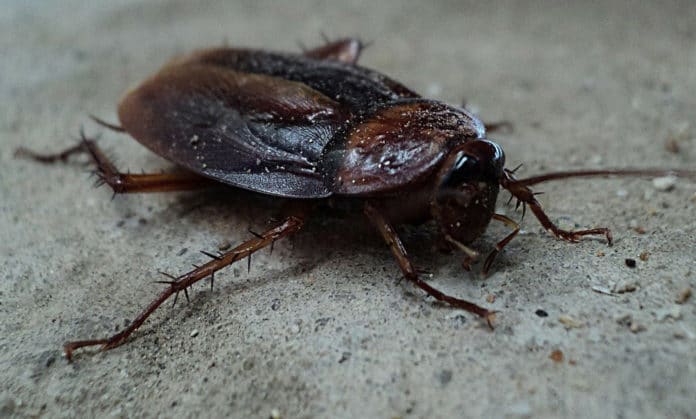How does a male cockroach attract its female cockroach for mating? The answer lies in those 29-carbon hydrocarbons in her cuticle that drive him wild.
A new study by the Tong-Xian Liu of Northwest A&F University in Yangling, China, and colleagues focus on Cockroach mating behaviors. Scientists wanted to determine how the female cockroach regulates the production of these contact sex pheromones and what happens when she produces too few.
A hydrocarbon called 3,11-DimethylC29 distinguishes male cockroaches from a female cockroaches. The hydrocarbon is chemically converted into a female sex pheromone.
When the male senses the pheromone with his antennae, he raises his wings to expose a nutrient-containing gland. While the female feasts on its contents, the male copulates with her.
In this study, scientists studied the molecular mechanism and biological significance that underlies the generation of sexually dimorphic hydrocarbons (SDHCs) in the German cockroach Blattella germanica.
Like other long-chain fatty particles, the pheromone precursor is combined to prolong a shorter hydrocarbon chain through an elongase enzyme.
For a better understanding of this regulation of synthesis, scientists blocked the set of cockroach elongases. They used a technique called RNA interference to block the elongases.
Knockdown of an enzyme called BgElo12 reduced the pheromone level, resulting in less attraction in male cockroaches towards the female.
Using RNAi knockdown, they showed that two insect sex differentiation genes directed BgElo12 creation. In male cockroaches, a gene called Doublesex subdued the creation of the elongase, restricting the amount of pheromone produced. In females, be that as it may, another gene, called Transformer, impeded the impact of Doublesex, turning on the elongase gene.
Knockdown of the Transformer in females led again to restricted pheromone production and reduced sexual appeal.
Liu said, “The identification of this pathway regulating female contact pheromones is valuable as it enriches our general understanding of the regulation of insect sexual behavior. Further, the elucidation of this key pathway in the cockroach, in particular, may well lead to better ways to control the reproduction of this globally significant pest.”
Journal Reference:
- Xiao-Jin Pei et al., Modulation of fatty acid elongation in cockroaches sustains sexually dimorphic hydrocarbons and female attractiveness (PLOS Biology (2021). DOI: 10.1371/journal.pbio.3001330
